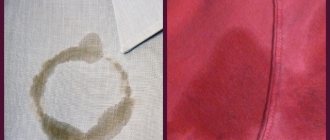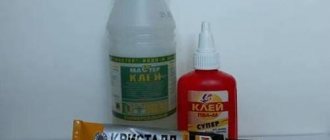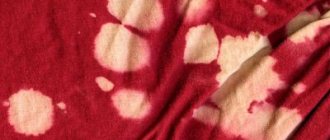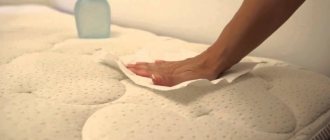Winter is a testing period for warm leather boots and boots. Good shoes are not afraid of frost, warm your feet well even in the most severe cold and do not allow moisture to pass through when it is slushy outside. However, even the best shoes and boots can be destroyed by ordinary salt.
In winter, you can notice how white stains appear on shoes, which spoil the appearance and worsen the condition of the skin. Because of this, shoes and boots, which previously could serve for several seasons without the slightest complaints, have to be thrown away with the arrival of spring.
How to remove salt from leather shoes? It's actually not that difficult. You just have to act quickly and methodically to protect the material from salt and prevent white marks from appearing.
You may be interested in: Belt with two rings: how to tie it, what outfits to wear it with
Salt on shoes
To remove salt stains from leather shoes, you need to understand how they appear there. There is an opinion that this may be salt from the composition for treating leather, which, as the material dries out and under the influence of external factors, begins to appear on the surface. This happens sometimes, especially if we are talking about inexpensive, poorly made material. But the phenomenon is not widespread, but rather an exception.
In most cases, white marks on the skin are the remains of chemical reagents that are sprinkled on roads to prevent ice. There is no point in complaining about this - if the road surface is slippery, the risk of accidents and traffic accidents increases. In this case, municipalities are choosing the lesser of two evils.
You may be interested in:Love Republic: reviews of clothing and store
Reagents consist of many chemical compounds. One of them is regular salt. But most of the reagents are calcium-magnesium and sulfate-carbonate salts. They mix with snow slush, mud and water and end up on your shoes. As the joints dry, they appear on the shoes as white streaks. If nothing is done, such marks will negatively affect the structure of the material and lead to drying and cracking of the leather. The appearance of the shoes also suffers.
How to remove salt from leather shoes? It's not difficult if you know what tools to use.
How to remove salt from suede boots?
Traces of salt are another serious problem that happy owners of suede shoes face. This is understandable - the reagents used to treat sidewalks and roads in winter cannot help but leave their “mark” on such capricious material.
If you find white salt stains on your favorite boots, you need to take immediate action. It’s better to start with cleaning - perhaps a fresh mark can be cleaned with a rubber brush. If all else fails, ammonia will come to the rescue. It is mixed with water (1:5) and the stains obtained are cleaned with the resulting composition. Next, the suede is wiped with a weak solution of water and vinegar.
A special coloring spray will help complete the cleaning, which will renew the color of your suede shoes and give them a fresh, well-groomed look. Often such products additionally contain special additives that help protect shoes from various external influences. Including moisture and salt.
First steps to save shoes from salt stains
Most often, white marks appear when melted snow with reagents gets on your shoes. If this happens, then after arriving home you need to do the following:
- If possible, remove the insoles. Unlace shoes with laces and open them as much as possible. Unfasten the zippers on the boots completely.
- Pour warm water into a basin. If the shoes are very dirty, then you need to prepare a soap solution. To do this, you need to dilute shavings of baby or laundry soap in warm water. Shoes made of genuine leather and leatherette must be washed completely, remembering to pay careful attention to the seams. This is where white streaks like to hide. If shoes and boots are made of suede or nubuck, then only the sole and edge (welt) should be cleaned. In this case, you need to wash very carefully so as not to wet the upper material.
- Wipe boots and shoes made of leather and faux leather thoroughly dry with a soft cloth. Wrap suede and nubuck shoes in paper to absorb water and salt solution.
- Open boots and shoes as much as possible and leave them to dry. Shoes should not be dried near radiators or other heating devices, otherwise they will crack. It is also undesirable to use a hairdryer. Naturally, boots and boots take a long time to dry. Therefore, it is worth using a special electric dryer or any available absorbent material (toilet paper, newspaper, cotton wool). As the material gets wet, it needs to be changed.
If you perform these actions daily, then the likelihood of white stripes appearing is very small. However, not everyone is capable of daily self-control and regular shoe cleaning. And in this case, you have to decide how to remove traces of salt from leather shoes. To cope with this problem, you can use modern cleaning products or suitable means at hand.
Shoe protection
To protect different types of shoes from salt, many ready-made products have been invented in various forms: liquid, cream or spray. Don't forget to treat your boots with them before going outside. This will help the shoes and make it easier to deal with salt stains. You can also use home remedies:
soak a sponge in hair conditioner and wipe leather shoes. Allow the product to absorb; moisten a rag in vegetable oil and rub it into the leather of the shoes. The fat base will prevent the formation of streaks; wax is an excellent means of protection. Soften it and rub the shoes, then treat with a brush; melt the wax, pour in turpentine and castor oil. Apply the ointment to your boots thoroughly.
Modern means
To avoid having to guess how to remove salt from leather shoes, the easiest way is to prevent it from appearing. Today, in any store you can find excellent care products for leather shoes. These can be creams, gels, sprays, pastes or wax. They will not only add shine, but also protect boots from exposure to salt and other chemicals.
In addition, every self-respecting shoe company produces various products that will help cope with visible traces of salt, for example Tarrago de Salter, Detach Stain, Antisol and others. They need to be applied directly to the whitened area, and then wipe the material with a clean rag or sponge.
The disadvantage of such funds is that they have a high price, high consumption and a short period of action. However, you can get rid of white spots using more budget-friendly means.
How to remove salt
You can remove salt from shoes using both folk remedies and special chemicals. It is important to wipe your boots immediately upon arriving home so that reagents or hard water do not have time to be absorbed. When fully processed, it is recommended to remove the laces.
Special means
Detach Stain
If there is salt on your shoes, you can purchase a special cleaner that combats salt stains:
- Detach Stain – Neutralizes salt with vinegar. A moistened cotton pad should be placed on the stain for 5 minutes, then wiped with a damp sponge and lubricated with cream.
- Tarrago De Salter – contains fluoride. To apply, shake the bottle and turn it over with the sponge facing down. The product must be rubbed over the dirt, then the resulting foam must be removed.
- Salton Antisol is the most budget-friendly product. After application, you need to remove it immediately, without waiting for absorption.
Modern products have a short shelf life, so they need to be used regularly. Also, we must not forget about water-repellent impregnation - shoes require comprehensive care.
Traditional methods
It is necessary to remove white stains on shoes as soon as possible so that the marks do not have time to be absorbed. Therefore, upon arriving home, you need to rinse your boots under a tap with warm water, then wrap them in paper napkins and set them to dry. Along with moisture, salt will be removed from the shoes, absorbing into the paper. At the end of the procedure, it should be lubricated with baby cream or Vaseline.
Heels can be cleaned well with a piece of potato. After this, they need to be polished and wiped dry.
Castor oil flushes away chemicals from demanding skin, softening the material. You need to moisten the sponge in clean water and rinse the surface. After drying, castor oil is applied and left overnight. In the morning, traces of salt will disappear.
Steam treatment
To get rid of salt on shoes, it is not necessary to use special products and solutions. You can boil a kettle and hold suede shoes or boots over its spout - the stains will disappear without harming the material. In some cases, a steam iron is used, but it does not allow treating local stains.
The procedure should be carried out in several approaches, since with prolonged exposure to steam the material begins to lose its shape.
It is recommended to purchase a steam generator - it will be useful for removing salt marks, smoothing delicate items and disinfecting furniture seams.
Cleaning with vinegar
How to remove stubborn salt from leather shoes? To do this, you should try using table vinegar (9%) or apple cider vinegar. Wine would also work. You need to mix vinegar and clean water in a ratio of 3:1. Next, you need to wash the shoes from dirt, put a napkin or cotton pad soaked in a vinegar solution on the white stains. Lightly rub the salt traces and then wait 8-10 minutes. Unabsorbed solution should be wiped off first with a damp cloth, then with a dry cloth. After drying, lubricate the skin with a special cream, Vaseline or oil.
How to avoid salt stains on shoes in the future?
The best remedy for problems is prevention, and suede shoes, that is, their safety, are no exception.
To ensure that suede boots last longer, you need to take appropriate measures. These include the use of products specially designed for cleaning, water-repellent impregnations, regular drying and cleaning, an attempt to avoid puddles and other places dangerous for shoes. You should not wear suede in rainy weather, and in cold weather you need special protective equipment.
Use of alcohol and paste
How to remove salt from leather shoes? This can be done using ammonia and semolina. Dilute alcohol in a 4:1 ratio with water, then soak a cotton pad in the solution and treat all problem areas with it. In order to finally get rid of salt stains and ammonia residues, the surface of the shoes must be rubbed with semolina. Instead of ammonia, you can use medical alcohol.
Toothpaste also helps in the fight against traces of chemical reagents. It is applied to the whitened areas and left for 10-15 minutes. Then the dried paste is washed off with running water, and the shoes are dried and treated with cream.
All non-traditional methods of getting rid of salt marks are not entirely safe for shoes. They can leave unsightly whitish spots if the skin was painted with unstable paint. Before using them, a preliminary test should be carried out on the inner leather surface, near the zipper or along the edging.
How to remove a stain from suede?
Oil stains on suede are one of the most unpleasant. Since the material has excellent absorbent properties, the oil penetrates deeply into the pile. Because of this, it usually becomes even more difficult to remove a greasy stain from suede. Especially if it's old. But you have to try, so I offer you several options to choose from, depending on what you have on hand.
- How to remove a greasy stain from suede shoes using talcum powder?
Take a frying pan, put it on the fire and heat the talcum powder on it. Cover the oily stain with warm powder and carefully protect it from the rest of the surface with napkins. Let the substance work for several hours. The fat will be absorbed and the residue will come off the suede along with the talcum powder. This method has worked well on fresh oil stains, but is less effective on old ones.
Tip: if you don’t have talc on hand, starch, baby powder or even tooth powder can replace it.
- How to remove a stain from suede with table salt?
Do not pour salt onto an oily surface. However, you can use an alternative option - heat the salt over a fire and pour it into a small cloth bag (you don’t have to use a bag, you can just wrap the salt in a clean cloth). Apply this homemade heating pad to the stain, the warm cloth will begin to absorb the fat, you will see it. Replace the oil bag with a clean one. Continue the procedure until you get the result.
- How to remove stains with ammonia?
This effective method involves preparing a solution of ammonia and liquid soap (1:1). You can add a drop of water if the mixture is too thick. Next, soak a clean cloth in this liquid and blot the contaminated area of the shoe. Leave for a few minutes for the active ingredients to take effect. Then dry the shoes and clean them with a brush. Ammonia is an excellent assistant in the fight against stains on soft suede. By the way, it can help even with complex and old stains, just not the first time.
- How to get rid of stains with vinegar?
If you don’t have starch or ammonia on hand, vinegar will help. Dilute with water and blot the stain, let it absorb. Blot your shoes with a napkin until the suede is completely clean. You can replace vinegar with ethyl alcohol and solutions based on it.
Here we tell you how to clean suede from heavy dirt.
Prevention
The easiest way is not to decide how to remove salt from leather shoes, but to prevent its appearance. To do this, you should use the following recommendations:
Source
Cleaning nubuck shoes
Such type of shoes as nubuck also requires careful processing. It will be difficult to remove salt from products.
Methods:
- Clean shoes with soapy water. When removing stains, pay attention to the seam area, because this is where salt accumulates the most. After treatment, dry the boots at room temperature for several hours.
- You can remove salt stains from nubuck shoes using special products. After processing, they will create a protective surface layer. When performing the manipulation, follow all the tips indicated on the packaging.
How to prevent stains
It’s not enough to know how to get rid of salt; you need to be able to prevent your boots from getting dirty. To prevent unsightly stains on your shoes, it is recommended to use water-repellent products. They are applied to clean, dry shoes before leaving the house. A cheaper way is to rub your shoes with a regular wax candle to form a protective, waterproof film on the leather.
If there is severe frost outside, to prevent salt stains on shoes, you should stop using silicone sponges and brushes. You should not walk on the sides of the roads. Every evening, when you come home, you should thoroughly clean and dry your boots. It is also important to remember that dress shoes are not intended to be worn in bad weather, especially in rain or slush.
Before you clean your shoes from salt, you need to make sure that they are completely dry. Winter (autumn) boots also need to be dried correctly - away from heating devices and using special pads. You can first stuff your shoes with newsprint; it absorbs moisture well. Under no circumstances should you use a hairdryer when drying, because it can severely deform the leather and suede. A smart solution would be to purchase a special electric shoe dryer.
It is best to remove salt deposits as soon as they appear. Over time, the reagent eats into the material and changes its structure. Old salt stains are much more difficult to remove than fresh ones.
If there are only a few stains on the shoes, folk remedies for removing salt and reagents will help deal with them, and they will not harm the material from which the boots are made. When it becomes necessary to use chemicals, it is first worth testing the specifics of their effects on an inconspicuous area of leather or suede. You will need to apply a small amount of the drug to a small area of salt stains and monitor the reaction of the material. If natural leather becomes discolored or changes its structure, you should not use a chemically aggressive substance.
Use water-repellent products
Wax shoes
You should always remove stains immediately after a walk.
Cleaning method
How to remove salt stains from suede shoes? Now let's look at another method that will also not cause difficulties in application.
Do not rush to immediately remove salt stains; this will not have an effect. Shoes must first be dried, then cleaned with an anti-lint brush. Next, avoiding the use of water, use regular milk to wipe off the salt stains.
After all procedures for removing salt and stains have been completed, it is necessary to take a number of preventive measures. This will help protect the shoes from further contamination, and therefore extend their life.
The first thing you should do is a steam bath for your boots. Hold suede shoes pre-stuffed with newspapers at a sufficient height above a pan of boiling water for 5 minutes. Wipe it with a terry towel and polish. Here it is worth using special means.
After this, apply water-repellent impregnation or antisolin cream to the suede shoes, protecting them from moisture and unwanted reagents. This will also protect your pair of boots from deformation, fading, roughness and cracks.
Store products
Using purchased funds is an easier and faster way. Stores sell special cans of cleaning foam that you can carry in your bag. If necessary, the foam is sprayed over the surface and removed along with the salt with a regular paper napkin. We list the most well-known means:
- "Antisol" from Salton. Effectively and safely acts on all materials.
- “Protection against salt and reagents” from Salton in the form of a spray. Constant care increases the resistance of shoes to reagents.
- "Water protection" from Salton . Recommended during slush and snowfall.
- "Water-repellent impregnation" from Salamander. Even when applied once a week, it creates invisible protection on shoes.
The disadvantage of purchased funds will be a large expense at their high cost. Therefore, in order to save money, you can choose cheaper analogues, prepared by yourself.











